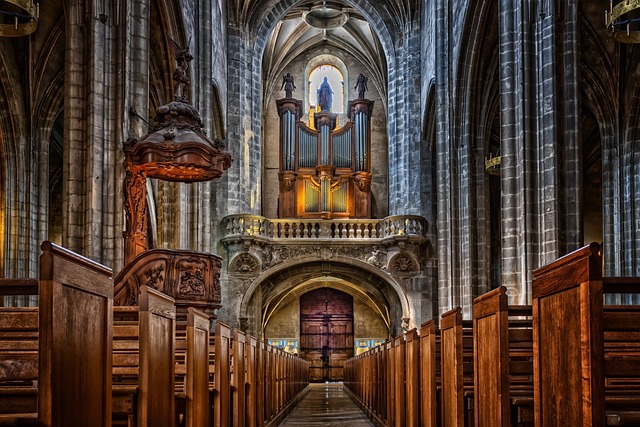Top Museums and Cultural Attractions in Belgium

Belgium, a small yet culturally rich country nestled in the heart of Europe, is a treasure trove of art, history, and architecture. From medieval castles to world-class museums, Belgium offers an unforgettable experience for travelers seeking to immerse themselves in its vibrant cultural heritage. Whether you’re an art enthusiast, a history buff, or simply someone who appreciates beauty, Belgium has something for everyone. In this article, we’ll explore the top museums and cultural attractions that make Belgium a must-visit destination.
1. The Royal Museums of Fine Arts of Belgium (Brussels)
Located in the capital city of Brussels, the Royal Museums of Fine Arts of Belgium is a must-see for art lovers. This museum complex comprises six distinct institutions, each dedicated to different periods and styles of art. Visitors can marvel at masterpieces by renowned artists such as Bruegel, Rubens, Magritte, and Delvaux.
One of the highlights is the Magritte Museum , which houses the largest collection of works by the surrealist genius René Magritte. His thought-provoking paintings challenge perceptions and invite viewers into a dreamlike world. Meanwhile, the Old Masters Museum showcases Flemish and Dutch art from the 15th to the 18th centuries, including iconic works like Pieter Bruegel the Elder’s “The Fall of the Rebel Angels.”
The museum’s elegant architecture and meticulously curated galleries create an atmosphere of sophistication, making it a perfect place to spend hours exploring Belgium’s artistic legacy.
2. Atomium (Brussels)
No visit to Belgium would be complete without seeing the iconic Atomium , a striking symbol of modernity and innovation. Built for the 1958 Brussels World’s Fair, this futuristic structure represents an iron crystal magnified 165 billion times. Its nine interconnected spheres house exhibitions, event spaces, and a panoramic restaurant offering breathtaking views of the city.
While not a traditional museum, the Atomium provides a unique cultural experience. Inside, visitors can learn about the history of the building, the technological advancements of the mid-20th century, and Belgium’s role in shaping the future. It’s a fascinating blend of science, design, and history that appeals to all ages.
3. The Plantin-Moretus Museum (Antwerp)
Step back in time at the Plantin-Moretus Museum in Antwerp, a UNESCO World Heritage Site that celebrates the art of printing. Housed in a historic printing workshop and family residence, this museum tells the story of Christophe Plantin and his son-in-law Jan Moretus, who were pioneers in the publishing industry during the Renaissance.
Visitors can admire original printing presses, typefaces, and manuscripts, gaining insight into how books were produced before the digital age. The museum also features stunning interiors, including a library filled with rare volumes and a courtyard garden that exudes tranquility. For anyone interested in literature, typography, or craftsmanship, the Plantin-Moretus Museum is a true gem.
4. The Musical Instruments Museum (Brussels)
Music enthusiasts will find their haven at the Musical Instruments Museum (MIM) in Brussels. With over 8,000 instruments from around the globe, this museum offers a comprehensive journey through the evolution of music across cultures and centuries.
What sets the MIM apart is its innovative use of technology. Visitors are given headphones upon entry, allowing them to listen to recordings of instruments as they view them. From ancient harpsichords to exotic African drums, every corner of the museum resonates with melody and rhythm. The rooftop restaurant, with its panoramic views of Brussels, adds a delightful touch to the overall experience.
5. Grand Place (Brussels)
While not a museum per se, the Grand Place in Brussels is a living testament to Belgium’s architectural and cultural brilliance. This UNESCO-listed square is surrounded by opulent guildhalls, the Town Hall, and the King’s House, all adorned with intricate facades and gilded details.
The Grand Place hosts several events throughout the year, including the famous Flower Carpet, where the entire square is covered with vibrant floral designs. Even on a regular day, the square buzzes with energy, thanks to street performers, cafes, and souvenir shops. It’s the perfect spot to soak in the ambiance of Brussels while admiring its historical grandeur.
6. The Ghent Altarpiece at St. Bavo’s Cathedral (Ghent)
Art history aficionados should head to St. Bavo’s Cathedral in Ghent to witness one of the most important artworks in Western civilization: the Ghent Altarpiece , also known as the “Adoration of the Mystic Lamb.” Painted by the Van Eyck brothers in the early 15th century, this polyptych is celebrated for its intricate detail, vivid colors, and revolutionary technique.
The altarpiece consists of multiple panels depicting biblical scenes, saints, and symbolic imagery. Its restoration has revealed even more of its original splendor, drawing pilgrims and scholars alike. A visit to St. Bavo’s Cathedral is not just about viewing a masterpiece—it’s about connecting with a pivotal moment in art history.
7. The Fashion Museum (Antwerp)
Fashionistas won’t want to miss the MoMu (Fashion Museum) in Antwerp, a hub for creativity and style. Known as the birthplace of avant-garde fashion designers like the Antwerp Six, the city takes pride in its cutting-edge approach to design.
The MoMu showcases both contemporary and historical fashion exhibits, often highlighting Belgian talent. Past exhibitions have featured works by Dries Van Noten, Ann Demeulemeester, and Martin Margiela. The museum’s sleek, minimalist aesthetic complements the boldness of the designs on display, creating a dynamic and inspiring environment.
8. Dinant Citadel (Dinant)
For those who appreciate military history and panoramic vistas, the Dinant Citadel is a must-visit. Perched atop a cliff overlooking the Meuse River, this fortress dates back to the 11th century and played a significant role in various conflicts throughout Belgian history.
Today, the citadel serves as a museum, offering insights into medieval warfare, weaponry, and daily life within the fortifications. Visitors can reach the citadel via a cable car or a steep climb, but the effort is rewarded with stunning views of Dinant’s picturesque landscape. Don’t forget your camera!


